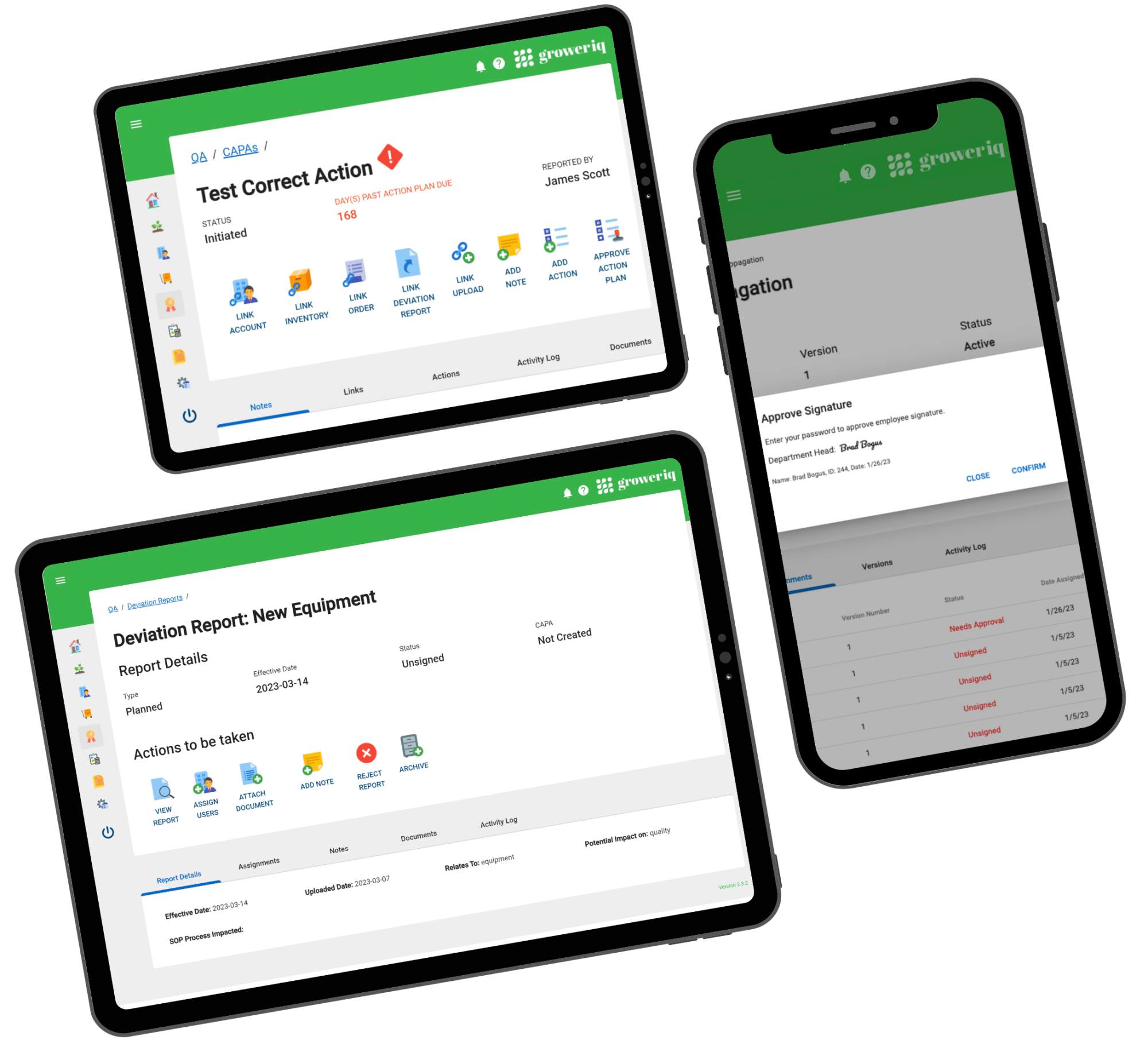Learn how to craft a successful cannabis dispensary business plan with 7 essential elements. Elevate your strategy for a thriving cannabis business.
A well-crafted cannabis business plan is the foundation upon which your dreams can become a reality. It’s the roadmap that guides you through the complexities of this highly regulated market, allowing you to navigate obstacles with confidence and clarity. But what exactly is a cannabis dispensary business plan, and how can it help you achieve your goals? Let’s explore these questions and more, as we delve into the intricacies of the cannabis business plan and uncover the secrets to building a thriving cannabis dispensary.
How Profitable is Opening a Dispensary?
The cannabis industry has experienced exponential growth in recent years, with the legalization of recreational and medicinal cannabis in various countries and states. As a result, operating a cannabis dispensary has emerged as an incredibly profitable business opportunity. In fact, dispensaries can see their net profit margins soar as high as 60%, making it a lucrative venture for aspiring entrepreneurs. We will delve into the factors that contribute to the profitability of cannabis dispensaries and explore the financial potential they offer.
Profit Margins in the Cannabis Dispensary Business
According to industry reports, cannabis dispensaries can enjoy net profit margins ranging from 30% to 60%. This is significantly higher than the average profit margins of other retail businesses, which typically fall between 0.5% and 3.5%. The high profit margins in the cannabis industry can be attributed to a variety of factors, including the high demand for cannabis products, limited competition in certain markets, and the ability to set premium pricing on products.
Factors Contributing to Profitability
1. High Demand
The increasing acceptance and legalization of cannabis has fueled a surge in demand for both recreational and medicinal products. With an ever-growing customer base, cannabis dispensaries have a consistent stream of customers seeking high-quality cannabis products.

2. Limited Competition
Depending on the region, the number of licensed dispensaries may be limited due to regulatory restrictions. This scarcity creates a competitive advantage for those operating dispensaries, allowing them to capture a larger market share and charge premium prices.
3. Premium Pricing
Cannabis dispensaries have the flexibility to set premium prices on their products due to the unique nature of the industry. Customers are often willing to pay a premium for top-quality cannabis strains, edibles, and other products. This ability to command higher prices contributes significantly to the high-profit margins observed in the industry.
4. Product Diversity
Cannabis dispensaries can offer a wide range of products, including different strains, edibles, concentrates, and accessories. By diversifying their product offerings, dispensaries can attract a broader customer base and generate more revenue streams, further boosting their profitability.
The Financial Potential of Cannabis Dispensaries
To illustrate the financial potential of operating a cannabis dispensary, let’s consider the average revenue per store in Ontario, Canada, which stands at $1,077,291. Assuming a conservative profit margin of 30%, a dispensary owner in Ontario would generate a profit of $323,187 per store. This is a staggering figure when compared to the average profit margins of other retail businesses.
If a business owner successfully scales their operations to include multiple stores, the profit potential becomes even more extraordinary. By expanding their presence and leveraging economies of scale, dispensary owners can exponentially increase their profitability and establish themselves as dominant players in the market.
Executive Summary
1. Tell Your Story: Captivate Your Readers with Your Purpose and Vision

Your executive summary should start by telling your unique story as a cannabis dispensary business owner. Share who you are, why you started this business, and what drives your passion in this industry. By showcasing your personal connection and commitment, you can engage and resonate with your readers.
- Highlight the problem you aim to solve in the cannabis market.
- Explain the challenges or gaps in the industry that your dispensary addresses, such as limited accessibility, lack of product variety, or inadequate customer education.
- Clearly articulate how you have developed a solution to these problems and emphasize the value proposition of your dispensary.
- Highlight your key capabilities and opportunities that set your business apart.
- Discuss any unique partnerships, proprietary technologies, or exclusive relationships that give you a competitive edge. This will demonstrate your ability to capitalize on the growing cannabis industry and position your dispensary as a lucrative investment opportunity.
2. Highlight Important Data: Showcase Market Insights and Target Audience Analysis
In the executive summary, you must showcase important data that supports your business plan and proves the viability of your cannabis dispensary. Share critical findings and insights from your market research, such as the current market size, growth projections, and consumer trends. This will help potential investors and partners understand the potential return on investment.
Provide a comprehensive analysis of your target market, including the demographics, psychographics, and buying behavior of your ideal customers. Identify the size of your target audience and evaluate the competition within your geographic area. By demonstrating a deep understanding of your target audience and market dynamics, you can instill confidence in the potential success of your dispensary.
3. Write the Executive Summary Last: Craft a Compelling Overview of Your Business Plan
It is recommended to write the executive summary after completing the entire cannabis dispensary business plan. By doing so, you can accurately summarize the most crucial aspects of your plan and ensure that it aligns with the overall structure and content of the document.
When writing your executive summary, maintain a concise and clear writing style. Use active voice and transition words to create a smooth flow of information. Be sure to include all the essential elements discussed earlier, such as your story, key findings, and target market analysis. Avoid going into excessive detail or overwhelming readers with unnecessary information. The goal is to provide an enticing overview that entices the reader to delve deeper into your business plan.
Related Reading
Market Overview
The market overview section of a cannabis dispensary business plan plays a crucial role in helping the reader understand the business opportunity. By addressing key components such as the target market, competition, industry outlook, emerging trends, barriers to entry, and industry regulations and laws, a comprehensive market overview provides valuable insights and demonstrates the potential success of the business.
1. Target Market
Understanding the target market is essential for any business, and cannabis dispensaries are no exception. The business plan should clearly define the demographic, psychographic, and geographic characteristics of the target market. By identifying the specific needs, preferences, and behaviors of potential customers, the reader gains a deeper understanding of the market’s size, growth potential, and profitability.

2. Competition
Analyzing the competitive landscape is vital for positioning a cannabis dispensary effectively. This section should provide an overview of existing dispensaries, their strengths and weaknesses, and any opportunities or threats they may pose. Discussing indirect competitors such as online cannabis retailers and other alternative products or services can help the reader understand the market dynamics and potential challenges.
3. Industry Outlook
The industry outlook section presents a comprehensive analysis of the cannabis market, including its current state and future projections. It should incorporate data on market size, growth rate, and potential opportunities for expansion. By highlighting the market’s potential and showcasing positive trends, this section helps the reader see the business opportunity as a lucrative venture.
4. Emerging Trends
Keeping up with emerging trends in the cannabis industry is crucial for success. This section should outline key trends such as new products, consumer preferences, technology advancements, and regulatory changes. By demonstrating an understanding of the ongoing developments within the industry, the business plan shows adaptability and the ability to stay ahead of the competition.
5. Barriers to Entry
Addressing the barriers to entry helps the reader understand the challenges and potential risks associated with starting a cannabis dispensary. This section should discuss factors like regulatory compliance, licensing requirements, capital investment, and operational complexities. Analyzing these barriers helps the reader gauge the level of effort and resources needed to establish a successful business.
6. Industry Regulations and Laws
The cannabis industry is subject to strict regulations and laws that vary by jurisdiction. This section of the market overview should provide a comprehensive overview of the legal framework, including licensing, taxation, product restrictions, and compliance requirements. By demonstrating a clear understanding of the regulatory landscape, the business plan shows the reader that the business will operate within the boundaries of the law.
Related Reading
- Cannabis Business Consultants
- Seed To Sale CRM
- Cannabis Cultivation Business Plan
- Seed To Sale Funding
- Cultivation SOP Template
- Cannabis Licensing Consultant
- Cannabis Venture Capital
- Grants For Cannabis Business
Strategy & Implementation
Current State Section: Assessing Where We Are
The current state section of a cannabis dispensary business plan is crucial to understanding the existing environment in which the business operates. It provides a snapshot of the company’s current position and helps to identify any external factors that may impact its success.
1. PESTEL Analysis: Macro Factors Assessment
A PESTEL analysis examines the political, economic, social, technological, environmental, and legal factors that may influence the cannabis dispensary business. This analysis helps the reader understand the external landscape and anticipate potential opportunities or threats. For example, political factors such as changing regulations may affect the legal framework for cannabis businesses.
2. 7-S Assessment: Internal Evaluation
The 7-S assessment evaluates a company’s internal elements: skills, style, strategy, staff, structure, systems, and shared values. This assessment helps identify strengths and weaknesses within the organization, enabling the reader to gain insights into the business’s internal capabilities and culture. Understanding these internal factors is critical for developing a successful strategy and implementing it effectively.

3. SWOT Analysis: Identifying Strengths, Weaknesses, Opportunities, and Threats
A SWOT analysis identifies the cannabis dispensary business’s strengths, weaknesses, opportunities, and threats. It provides a comprehensive view of the internal and external factors affecting the company’s success. Strengths and weaknesses are internal to the business, while opportunities and threats are external. This analysis helps the reader understand the business’s competitive advantage, potential vulnerabilities, and growth potential.
Future State Section: Vision and Goals
The future state section of a cannabis dispensary business plan outlines the strategic objectives, vision statement, high-level goals, business model, and desired value proposition of the company. This section provides a clear picture of where the business aims to be in the future and how it plans to achieve its objectives.
1. Vision Statement: Inspiring Purpose and Direction
A vision statement articulates the long-term aspirations and purpose of the cannabis dispensary business. It serves as a guiding light, inspiring employees, investors, and stakeholders by highlighting the desired future state of the company. The vision statement helps the reader understand the business’s core values, mission, and overarching goals.
2. Strategic Objectives: Clear Direction for Success
Strategic objectives outline the specific goals and targets that the cannabis dispensary business aims to achieve. These objectives should be aligned with the overall vision and mission of the company. They provide clarity and direction, helping the reader understand the business’s focus areas and priorities.
3. Business Model Canvas: Visualizing the Value Proposition
A business model canvas is a visual representation of the company’s value proposition, customer segments, channels, revenue streams, key activities, resources, and partnerships. It helps the reader understand how the business plans to create, deliver, and capture value in the market. The canvas provides a holistic view of the business model, making it easier to communicate and comprehend the overall strategy.
Strategic Plan: Actions for Success
The strategic plan outlines the specific actions and initiatives needed to achieve the cannabis dispensary business’s strategic objectives and goals. It provides a roadmap for executing the strategy effectively and ensures that all necessary steps are taken to drive success.
1. Strategic Priorities: Focused Areas of Action
Strategic priorities are the key areas of focus that will enable the cannabis dispensary business to achieve its strategic objectives. They define the critical actions and initiatives that need to be implemented. These priorities provide the reader with a clear understanding of the business’s core activities and the steps it will take to achieve its goals.
2. Details on Actions: Execution is Key
The strategic plan should include specific details on the actions and initiatives required to achieve the strategic priorities. This may involve marketing strategies, operational improvements, talent acquisition, technology implementation, or any other relevant activities. Providing these details helps the reader understand the tactical steps the business will take to drive success.
Key Milestones & Metrics
In a cannabis dispensary business plan, the milestones and metrics section plays a crucial role in demonstrating the business sense and pragmatism of the venture to potential investors and financiers. This section outlines the key points on the path towards achieving the broader high-level business goals and provides a roadmap to success.
By breaking down the overarching goals into more realistic and achievable milestones, entrepreneurs can show their understanding of the market dynamics and the steps required to reach their objectives. This not only helps investors gauge the business owner’s strategic thinking and planning skills but also provides them with confidence in the feasibility and profitability of the venture.
Milestones: Measurable Targets on the Road to Success
Milestones are specific and measurable targets that serve as checkpoints on the journey towards the ultimate business goals. They act as markers of progress and provide a clear indication of whether the business is on track or needs adjustments. Let’s explore some examples of milestones within the context of a cannabis dispensary business plan:
1. Achieving Revenue Targets
One of the primary milestones for a cannabis dispensary could be reaching a certain level of annual revenue. For instance, if the goal is to generate $1,000,000 in annual revenue, the entrepreneur may break it down into more manageable milestones. These could include generating $250,000 in year 1, $750,000 in year 2, and ultimately meeting or exceeding the $1 million mark in year 3.
These milestones not only demonstrate the business owner’s understanding of revenue growth projections but also provide a clear roadmap for investors regarding the expected financial performance.
2. Expansion Goals

Another common objective for a cannabis dispensary may be to open multiple locations. Suppose the entrepreneur aims to open five dispensaries. In that case, milestones can be set to achieve this expansion target. For example, the first milestone could be reaching positive cash flow in the first store.
Once that milestone is achieved, the entrepreneur can set another milestone of saving $100,000 in profit to create a construction fund for the second store. This approach shows investors that the entrepreneur has thought through the expansion strategy and has a systematic plan in place.
3. Compliance Milestones
Given the highly regulated nature of the cannabis industry, milestones related to compliance and licensing are essential. These can include obtaining all necessary permits, licenses, and certifications within specified timeframes. Demonstrating a clear roadmap for regulatory compliance assures investors that the business understands and prioritizes compliance, reducing potential risks and liabilities.
4. Branding and Marketing Milestones
Building a strong brand presence and attracting customers are crucial for the success of any cannabis dispensary. Milestones related to branding and marketing efforts can include launching a website, establishing social media presence, reaching a certain number of followers or subscribers, and increasing customer engagement.
These milestones demonstrate the entrepreneur’s understanding of the importance of marketing in a competitive industry and their ability to drive customer acquisition and retention.
Financial Projections
When presenting a cannabis dispensary business plan, the financial projections section is crucial for demonstrating the viability and profitability of the venture. This section consists of three key components that play a vital role in helping the reader understand the business opportunity. Let’s dive into each of them:

1. Pro Forma Cash Flow Statements
Pro forma cash flow statements provide a comprehensive overview of the anticipated inflows and outflows of cash for the cannabis dispensary business. This includes projected revenues, expenses, and investments over a specific period, typically three to five years. By analyzing the cash flow statements, investors and lenders can assess the business’s ability to generate positive cash flow and meet its financial obligations.
The importance of including pro forma cash flow statements lies in its ability to provide insights into the business’s liquidity, highlighting whether the dispensary will have enough cash on hand to cover operating expenses, debt payments, and potential expansion. Investors and lenders can gauge the financial health of the business, assess its ability to withstand unforeseen challenges and determine the potential for future growth.
2. Pro Forma Balance Sheets
Pro forma balance sheets present a snapshot of the cannabis dispensary’s financial position at a specific point in time, typically at the end of each fiscal year. This statement outlines the business’s assets, liabilities, and equity, allowing investors and lenders to assess the business’s solvency and overall financial health.
Including pro forma balance sheets in the business plan is essential as it demonstrates the dispensary’s ability to manage its assets and liabilities effectively. It provides a clear picture of the business’s financial stability, its capacity to repay debts, and its potential for future reinvestment. By analyzing these balance sheets, investors can evaluate the dispensary’s financial risk and make informed decisions about potential investments.
3. Pro Forma Income Statements
Pro forma income statements, also known as profit and loss statements, provide an overview of the dispensary’s projected revenues, costs, and expenses over a specific period. These statements showcase the business’s ability to generate profits and its potential for growth.
The inclusion of pro forma income statements in the cannabis dispensary business plan is crucial as they allow investors to assess the company’s profitability and financial performance. By analyzing these statements, investors can identify the primary revenue streams, evaluate the cost structure, and make informed decisions about potential investments. These statements provide insights into the business’s ability to generate a return on investment, assess the sustainability of its operations, and determine the potential for future expansion.
Marketing & Sales Plan
Products That You Will Offer
In the marketing and sales section of your cannabis dispensary business plan, it is vital to outline the products you will offer. This includes a detailed description of the cannabis strains, edibles, topicals, concentrates, and other products that will be available for purchase.
Targeted Offerings
By describing the products, you not only provide the reader with an understanding of what your dispensary will offer but also show how these products will cater to your target market. For instance, if your target market consists of health-conscious individuals, you may focus on offering organic and sustainably sourced cannabis products.
Competitive Edge
Describing your products helps your company stand apart from competitors. Highlight any unique strains or exclusive partnerships you may have with local growers. Emphasize the quality, potency, and variety of your products to demonstrate your commitment to meeting the diverse needs and preferences of your target market.
Pricing and Positioning
Pricing and positioning are crucial components of the marketing and sales section in a cannabis dispensary business plan. This involves determining the pricing strategy for your products and identifying where your dispensary will position itself in the market.
Strategic Pricing
The importance of pricing lies in its impact on both profitability and attracting customers. Your pricing strategy should consider factors such as the cost of production, market demand, competition, and desired profit margin. By clearly articulating your pricing strategy, you demonstrate a thorough understanding of the market dynamics and your ability to offer competitive pricing.
Distinctive Positioning
Positioning, on the other hand, refers to how your dispensary will be perceived by customers relative to competitors. This can include factors such as brand image, product quality, customer service, and convenience. Clearly defining your positioning strategy helps the reader understand how your dispensary will differentiate itself and create a unique value proposition in the market.
Promotion
Promotion plays a critical role in building awareness of your cannabis dispensary and attracting customers. In the marketing and sales section, it is essential to outline your promotional strategies and tactics.
Targeted Promotion
Start by identifying your target market and understanding their preferences and behavior. This will guide your promotional efforts and help you choose the most effective channels to reach your audience. For instance, if your target market consists of young adults, social media platforms like Instagram and Snapchat may be effective for building awareness.
Diverse Channel Approach
Consider utilizing a mix of marketing channels such as digital advertising, social media marketing, search engine optimization (SEO), content marketing, influencer partnerships, and local community outreach. Each of these channels has its own strengths and reach different segments of your target market.
Distinctive Initiatives
It is also important to highlight any unique promotional initiatives that differentiate your dispensary. This could include loyalty programs, referral programs, educational seminars, or partnerships with local events and organizations. By showcasing your promotional strategies, you demonstrate your commitment to reaching and engaging your target market effectively.
Partnerships
Partnerships can be instrumental in the success of a cannabis dispensary. In the marketing and sales section of your business plan, it is important to outline potential partnerships that will strengthen your position in the market.

Strategic Alliances
Consider partnering with ancillary businesses that target the same audience as your dispensary. For example, collaborating with a yoga studio, wellness center, or holistic health practitioner can help expand your reach and tap into new customer segments. By partnering with complementary businesses, you can cross-promote each other’s services and products, leveraging each other’s customer base.
Supply Chain Assurance
Establishing partnerships with key suppliers is crucial for ensuring a reliable and consistent supply of high-quality cannabis products. Highlight any agreements or potential partnerships you have with local growers, manufacturers, or distributors. By demonstrating strong relationships with trusted suppliers, you instill confidence in the reader that your dispensary will have a consistent supply of products that meet or exceed customer expectations.
Operational Plan
Personnel Responsibilities: Building the Dream Team
In any business, the people behind the operations play a crucial role in its success. When it comes to a cannabis dispensary, the personnel responsible for the various tasks can make or break the business opportunity. In the operations plan of a cannabis dispensary business plan, it is important to include a detailed breakdown of the key personnel or departments and their respective responsibilities.
By providing information about the individuals or teams responsible for completing specific tasks, the reader can gain insight into the expertise and experience level of the staff. This helps build credibility and confidence in the business opportunity, as it shows that the necessary skills and knowledge are in place to ensure smooth operations.
Department Functions: The Backbone of Operations
A cannabis dispensary operates like any other retail business, with several departments or functional areas responsible for specific tasks. Including a description of what each department is responsible for is crucial in the operations plan of a cannabis dispensary business plan.
This gives the reader a clear understanding of the different facets of the business and how they work together to deliver a seamless customer experience. It also highlights the level of organization and coordination within the dispensary, demonstrating that all aspects of the business, such as inventory management, customer service, compliance, and marketing, are being addressed.
Location Details: Finding the Perfect Spot
The location of a cannabis dispensary can significantly impact its success. Including information about where the daily operations will take place is essential in the operations plan of a cannabis dispensary business plan. This allows the reader to evaluate the potential market size, competition, and accessibility of the chosen location.
The location details also help the reader understand the market dynamics and the potential customer base surrounding the dispensary. It demonstrates that careful consideration has been given to factors such as zoning regulations, security measures, and proximity to complementary businesses, all of which are crucial for a successful cannabis dispensary.
Timeline and Deadlines: The Roadmap to Success

Setting clear deadlines for completing tasks and achieving goals is vital for the success of any business. In the operations plan of a cannabis dispensary business plan, it is essential to include the when – the specific deadlines for when tasks and goals are to be completed.
By providing a timeline, the reader can gain insight into the level of organization and planning within the dispensary. It shows that there is a strategic roadmap in place, and the business is moving forward with a clear vision and actionable steps. This instills confidence in the reader and helps them understand the business opportunity in terms of future growth and development.
Budget and Resource Allocation: The Fuel for Operations
Money makes the world go round, and it is no different in the cannabis industry. Including information on how much each department or team needs to complete their tasks is crucial in the operations plan of a cannabis dispensary business plan.
By providing a breakdown of the costs associated with each department or team, the reader can understand the financial requirements of the business. This helps them evaluate the feasibility and profitability of the business opportunity. It also demonstrates that the business has a realistic understanding of its financial needs and has allocated resources accordingly.
Related Reading
- Cannabis Cultivation Software
- Cannabis Inventory Software
- Cannabis Distribution Software
- Cannabis Growing Consultants
- Commercial Cultivation Business Plan
- Cannabis Angel Investors
6 Ingredients To Set Your Cannabis Dispensary Up for Success
1. Capital to Fund Your Business
One of the most crucial ingredients for setting up a successful cannabis dispensary is having sufficient capital to fund your business. Starting a dispensary requires significant upfront investment, including the cost of real estate, building or renovating the space, purchasing inventory, marketing, and hiring staff. Without enough capital, your business may struggle to cover expenses and could even face closure.
In addition to covering immediate expenses, having ample capital provides your dispensary with long-term value. It allows you to weather any financial challenges that may arise, such as unforeseen maintenance costs, regulatory changes, or slower-than-expected sales. By having a financial cushion, you can continue operating smoothly and adapt to changes in the industry, ensuring the longevity of your business.
2. Identifying and Securing the Right Location
Choosing the right location is a critical factor in the success of your cannabis dispensary. A bad decision in this area can result in poor visibility, limited customer access, or zoning issues, which can impede business growth and profitability. Selecting a location in an area with low foot traffic or limited population might lead to difficulties in attracting a consistent customer base.
On the other hand, securing a prime location can provide your dispensary with long-term value. A high-traffic area with easy access and ample parking can drive more customers through your doors. It also enhances your dispensary’s visibility and brand recognition, helping you establish a strong presence in the community. A well-chosen location can serve as a competitive advantage, positioning your business for sustained growth and profitability.
3. Acquiring the Necessary Licenses and Permits
Obtaining the appropriate licenses and permits is essential for operating a legal cannabis dispensary. Failure to acquire the necessary approvals can result in hefty fines, closure of your business, or even legal consequences. The regulatory landscape surrounding cannabis businesses is complex and continually evolving, making it crucial to stay compliant with all local, state, and federal regulations.
Acquiring the proper licenses and permits not only ensures your dispensary’s legal operation but also provides long-term value. By following all regulations and maintaining a spotless compliance record, you build trust with customers and establish a reputable brand. It also minimizes the risk of legal entanglements, allowing you to focus on growing your business and serving your clientele.
4. Hiring and Training Qualified Staff
Building a competent and knowledgeable staff is vital to the success of your cannabis dispensary. Inadequate hiring decisions can result in poor customer service, lack of product knowledge, and a negative overall experience for your customers. This can lead to customer dissatisfaction, loss of business, and damage to your dispensary’s reputation.
Conversely, hiring and training qualified staff provides long-term value to your dispensary. A well-trained team can provide exceptional customer service, educate customers about your products, and create a welcoming and professional environment. This enhances customer satisfaction, fosters loyalty, and generates positive word-of-mouth, which are all crucial factors for sustained growth and success in the cannabis industry.
5. Establishing the Right Suppliers
Choosing the right suppliers is crucial for ensuring a consistent and high-quality inventory for your cannabis dispensary. Partnering with unreliable suppliers can result in delayed deliveries, inconsistent product quality, or even a complete lack of inventory. This can lead to dissatisfied customers, lost sales, and a damaged reputation.
On the other hand, establishing relationships with reliable and reputable suppliers offers long-term value to your dispensary. By working with trustworthy suppliers, you can ensure a steady supply of high-quality products, which is essential for customer satisfaction and loyalty. Strong supplier relationships can provide you with access to exclusive products, discounts, or favorable terms, improving your dispensary’s profitability and sustainability.
6. Setting up the Right Systems (Software and hardware)

Implementing the right software and hardware systems is crucial for streamlining operations and maximizing efficiency in your cannabis dispensary. Poor system choices or lack of technology integration can result in inventory management issues, difficulties in tracking sales, or inefficient workflows, all of which can hinder your dispensary’s performance and profitability.
On the other hand, setting up the right systems offers long-term value to your dispensary. Implementing robust point-of-sale software, inventory management systems, and security measures can enhance operational efficiency, reduce errors, and improve overall productivity. It also provides you with accurate data and insights, enabling you to make informed decisions, identify trends, and optimize your business processes. By leveraging technology effectively, you can position your dispensary for long-term success in a competitive industry.
Discover how GrowerIQ’s seed-to-sale software can help you set up all of the components of a successful cannabis production operation without any hassle. Questions we haven’t covered? Please reach out and let us know. GrowerIQ serves clients coast to coast, and we’re ready to help your team today.
Streamline Cannabis CultivationRecommended For You
The Hermaphrodite Chronicles: Unlocking Secrets to Transforming Hermaphroditic Cannabis Plants into Growing Goldmines
December 26, 2025Unlocking the Secret Garden: A Journey into Growing CBD Flowers at Home
December 25, 2025Nurturing Nature’s Green Jewel: Expert Secrets on How to Care for a Cannabis Plant
December 24, 2025About GrowerIQ
GrowerIQ is changing the way producers use software - transforming a regulatory requirement into a robust platform to learn, analyze, and improve performance.
To find out more about GrowerIQ and how we can help, fill out the form to the right, start a chat, or contact us.

